February was not just about prettily frosted plants. Later in the month the garden was buried in almost a foot of snow. Unheard of amounts of snow, I’m told! Schools and city hall closed for a couple days, and the snow stayed on the ground about a week.
For most of February the Oregon garden continued to be pummeled by frosts and feet of snow. This amount of snow, I’m told, is unusual. The garden and gardener may be on winter hiatus, but the energy normally poured into plants and garden inevitably spills over onto the wider surroundings, which to me are a novel and fascinating ecosystem.
I haven’t said much here, but after growing up in Los Angeles, living among small towns in a temperate rain forest is an extraordinary change. Traveling along the coast, I compulsively check the population numbers of every town we pass through — Marty is used to this tic now. Renowned PNW writer Ken Kesey described them as “Towns dependent on what they are able to wrest from the sea in front of them and from the mountains behind, trapped between both.”
The geographic isolation works to both attract and repel. I’ve met families who’ve been here several generations that can’t conceive of living anywhere else. But word occasionally gets around that so-and-so is leaving, moving away because they can’t take the small-town isolation anymore.
Our own small town of approx 5,000 functions as a “15-minute city” (I can get anything I need on foot in 15 minutes). It will never see sprawl — not through proactive design but because there’s not much buildable land in a small town surrounded by farms, rivers and floodplains. Big enough for reliable buses, trash pickup, utilities, supercharger stations a block away. Veterinarians, dentists, hospital, groceries, seasonal farmer markets, schools, haircuts, hardware store, microbeer, boat launch, library, all within walkable distance. Most of the other coastal town populations come in under a thousand. The majority of towns appear to have a seasonal population — tourism replaces industry.
How many people does it take to keep a town functional? What industries have come and gone, and why? Forest fires ravaged the timber industry in the fairly recent past (see Tillamook Burn), and my town is down to one lumber mill. Every morning I am greeted by its plume of smoke to the east when sitting under the overhang having the first coffee in the garden with Billie. The replanted burn areas have grown in surprisingly fast, but the mills are gone for good. Lumber will no longer be the powerhouse employer it once was. A coastal railway operating from the coast to Portland was so severely damaged in winter storms that in 2007 is was decided the cost was too great to fix, and repairs would also likely damage spawning grounds, so the railway line was abandoned. Overfishing ended most commercial fishing, with sport fishing taking up the slack now. Oysters, clams and crabs still multiply lustily in this unique five-river estuary, the second largest in Oregon.
Indigenous people became “complex” hunter-gatherers here in this narrow coastal strip bounded by the Coast Range, able to build permanent houses and complex social structures without a written language. This defies the old anthropologic saw that agriculture and its surpluses are first acquired and then permanent dwellings and complex societies follow. Here the abundance of food, and especially the predictability of the salmon runs, allowed for permanent villages of cedar plank houses. Cedar also made water-proof clothing, baskets, canoes — it was put to protean uses.
The geographic isolation of the coast worked to the advantage of the native people for thousands of years, until European fur traders sailed in. Very soon after, the native people succumbed to European diseases and settler disputes, with the rapidly dwindling number of tribal members eventually pushed to reservations. Just driving along the coast brings all this readily to mind. The rivers, the ocean, the mountains, the geographic isolation even now with just a couple roads, the winter-long rain — all tell vivid stories of the limits and possibilities here.
The dairy farmers seem to be thriving despite new rules protecting wetlands, spawning grounds, and the watershed. There is grumbling but respectful cooperation. Small farms are gaining a toehold, growing seasonal produce for restaurants, farmer markets, and CSA boxes.
Unlike Los Angeles, everything is tangible, visible on the surface, the systems easy to read. Geography rules! Los Angeles is a subtle ecosystem easily overrun by ambition, at least in the short term until water supplies capsize. Here geography and climate have the final say. Cause and effects happen in real time. Housing is scarce and locals cannot afford to buy a house on local wages — some things are constant. Child care is not just scarce but impossible to find — another constant.
Just some quick thoughts on small towns where, for good or ill, the machinery that makes towns run, or not, is in full view. In LA it was always inscrutable to me, starting with that crazy concrete-bottomed river, which I hear is near to overflowing lately…



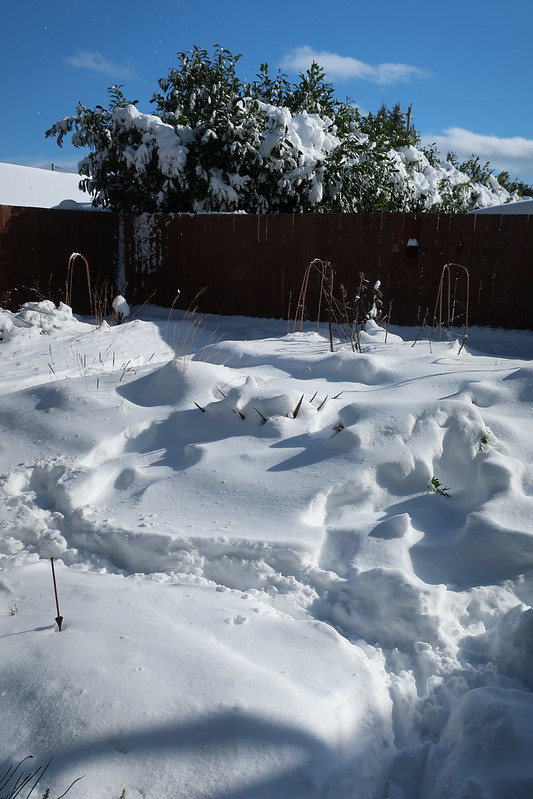
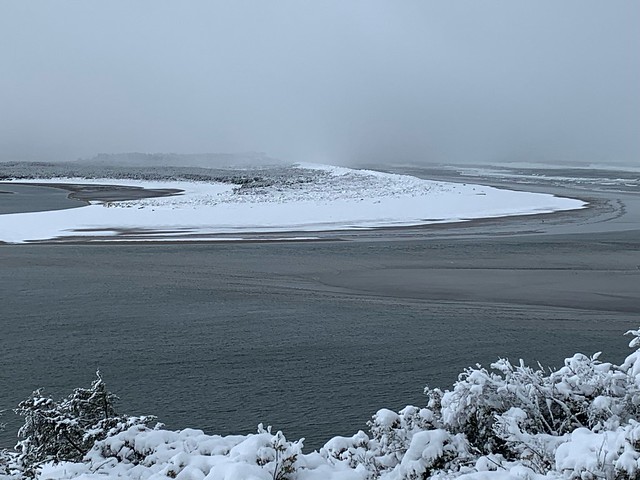



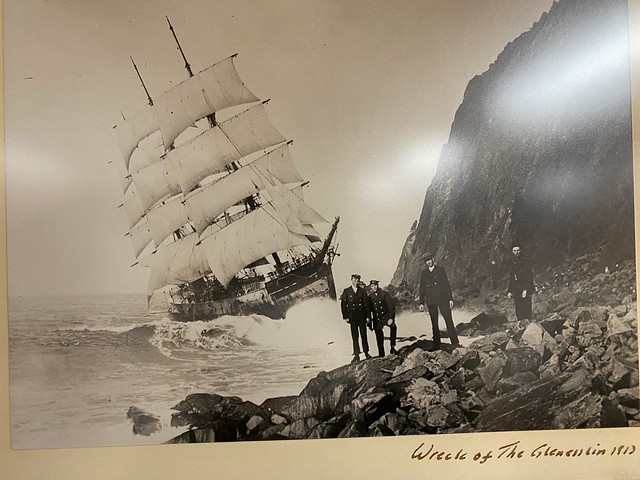
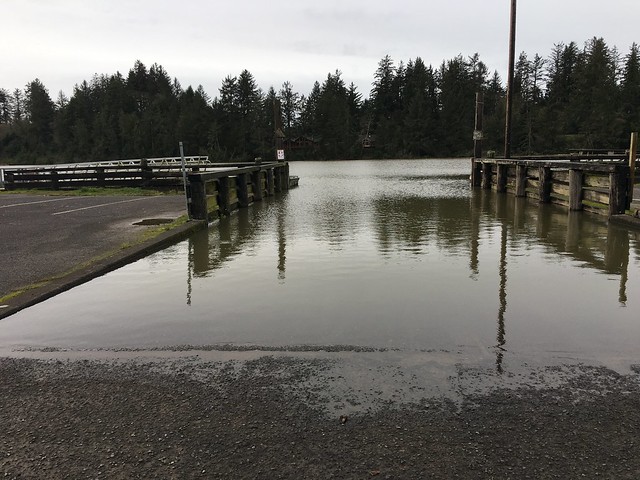
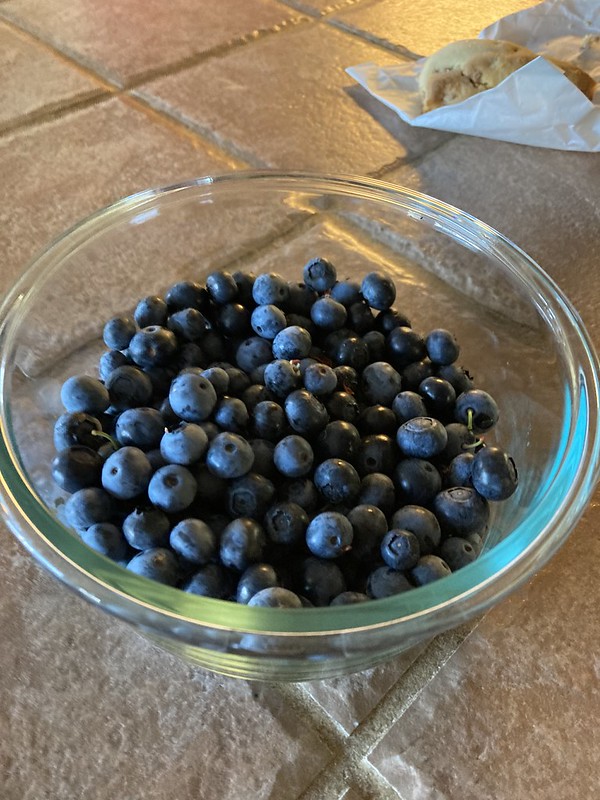
Billie seems to thoroughly enjoy the snow! Did she create all those paths or did you help?
Like you, I was born and raised in Los Angeles County and have spent the majority of my life here. Small towns surrounded by nature have their appeal, although I have to wonder if those 15-minute walks would make me feel claustrophobic after awhile. Based on your map, it also seems that all roads, or at least the larger ones, lead to Portland!
Puppy bouncing in the snow. What fun Boris and Natasha would have with that, even at their age.
Meditation on small town living and economics. It is so different–are people tolerant of you as outsiders? I’m the first (and last) generation of small village people–centuries of them. Humans adapt–that is how we took over the planet.
While here so much rain has been very strange–like the whole state has moved somewhere else.
I mean first and last generation of mega-city dweller–family who lived in the same villages for centuries somehow sent me to this massive sprawl that is SoCal.
@Kris, yes, that was all Billie’s work. The first snowfall was light and soft. I’ve always liked leaving the house on foot and never was much of a shopper, mall-goer, etc, so the small town size isn’t an issue. Such an interesting time we’re living in…
@Hoov, there’s a long-standing suspicion of people from CA moving here that goes back decades, and it’s best to change license plates pronto, but one-on-one we’ve had no problems. Now I’m curious what small village you hail from!
When we accidently ran into the people selling “our” house (he came home and we were in the backyard) the one question he asked “are you from California?” When I tried to get the HPSO to be a PacHort partner that anti CA bias came thru loud and clear. I just don’t understand that way of thinking.
Anyway….this winter was one I will not soon forget. I just tossed another large old (growing here for YEARS) agave in the compost bin. So much garden destruction (and not just the agaves). I hope yours is recovering…
@Loree, so sorry about the tossed agave! I’m wondering how the zone 10 garden is faring in all this rain — I bet they’re some agaves to toss down there…